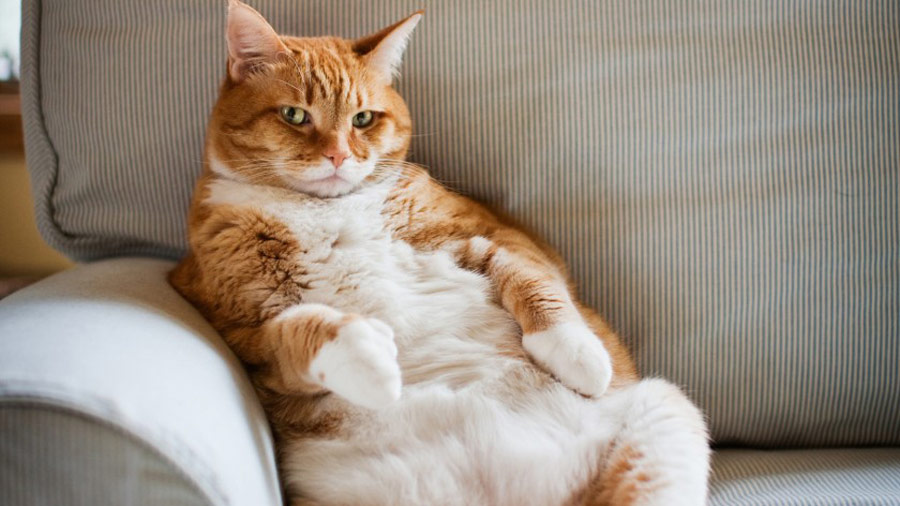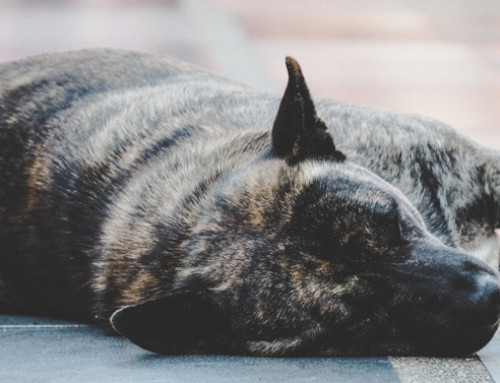In Australia, approximately 30-40% of cats and dogs are overweight or obese*. As responsible pet parents, it is our job to keep a check on our pets’ waistlines.
So, if your purring pal is starting to look a little chubby around the tummy, it may well be time to put your cat on a diet.
Just like in humans, excess fat can be detrimental to the health of our companion animals. Keeping a close eye on the amount of food they eat is an important part of ensuring our pets live a healthy, happy life.
Certainly, it can be difficult to ignore those pleading purrs but if you notice your kitty is getting a bit soft around the middle, it’s time to take action.
According to Vet Voice, risk factors for obesity in pets include:
- Being female
- Being neutered
- Inadequate exercise
- Having overweight owners
- Poor diet
While you might think your cat is kind of cuddly when he or she is carrying an extra bit of weight, it’s important to recognise that obesity can have negative consequences on an animal’s health. Health risks include:
- Heart disease
- The early onset of arthritis
- Respiratory problems
- Diabetes
- Higher susceptibility to infections
- Skin issues
Knowing when to put your cat on a diet
You say ‘cuddly’, I say ‘obese’ — it’s important for pet owners to be able to identify when their cat needs to slim down. However, this can be tricky.
In general, a cat is classified as being overweight when more than 20% of its body weight is fat. Yet, as an owner, how do you measure how much fat your cat is carrying?
You can’t, but luckily there are some telltale signs to help you recognise when you need to put your cat on a diet.
Firstly, you should be able to feel but not see your cat’s ribs. Secondly, your cat should not have a fold of fat hanging down when he or she walks. In addition, although it can be hard to pinpoint a cat’s waist, you should see an indentation resembling a waistline.
The RSPCA states that other signs of obesity in cats include an inability to groom, noticeable fat deposits at the base of the cat’s tail, lack of mobility and labored breathing.
Of course, an undeniable way to tell if your cat has put on weight is to put him or her on the scales. After all, the scales don’t lie!
According to Animal Planet, two to three extra pounds (0.9 to 1.36 kilograms) for a cat is equivalent to 40 pounds (18 kilograms) for a human! Just imagine the impact that can have on your cat’s heart and general health!
How to put your cat on a diet
Assuming you’ve considered all the telltale signs and you believe your cat is on the porky side, it’s essential you take action. Putting your cat on a diet takes commitment, but remind yourself that sticking to a healthy regimen is vital for your cat’s wellbeing and quality of life.
To begin, be sure to seek the advice of your vet. A vet can perform a thorough health check-up, advise on the ideal weight range for your cat and help you find an appropriate and tailored weight-loss plan.
A vet assessment is also important in identifying if there’s an underlying cause for your cat’s weight gain – for example, diabetes or thyroid disease. If your cat does have a health issue that’s affecting its weight, this needs to be addressed.
Here are a few extra tips to help you when putting your cat on a diet.
Police their food
Undoubtedly, the most common reason for a cat to get fat is too much food. Once you’ve spoken to your vet regarding how much food your cat should be eating, you must take charge.
Putting your cat on a diet means you’re responsible for measuring out the correct portions of food and sticking to it.
If you find it difficult to measure out the appropriate amount of food at each feeding, consider getting an automatic feeder.
Make sure you feed your cat lean, high-quality food and most importantly, avoid giving too many treats in between meals. While the odd treat is okay (you still want Kitty to feel loved), make it a healthy treat that’s if free from unnecessary fillers and additives.
What’s more, make sure your cat has continuous access to clean, fresh water. Just like humans, cats can mistake thirst for hunger.
TIP: Allow your cat windows of opportunity to feed. Feed your cat at the same time each day and only leave their food there for a certain amount of time. Once you’ve allowed Kitty time to feed, remove the food. This can be especially helpful if your cat is refusing his or her new menu. Kitty will soon learn that if she doesn’t eat, she misses out.
Set up an exercise plan
Older cats can become sedentary, so set up a daily exercise regime to keep your cat moving. You might need to make or buy some new toys. Alternatively, you may just need to set aside time each day to play with your cat.
Try to incorporate games that including jumping and chasing as these will appeal to your cat’s natural hunting instincts.
If your cat refuses to play, try walking him or her on a leash. If motivating your cat becomes very difficult, perhaps you need to introduce play in short, frequent blocks. So instead of playing for 10 minutes twice a day, play for five minutes four times a day.
TIP: Be wary, if you have an outdoor cat you may be tempted to let them out more often to increase their exercise. However, this may lead them to increase their calorie intake through hunting prey and stealing scraps from neighbours.
Helping your cat maintain a healthy weight, within their recommended range, is an important step in protecting their health. Don’t forget, having a cat with an unhealthy heart, diabetes or disease can be costly in terms of vet bills.
Aside from protecting the health and wellbeing of your cat, you may want to think about protecting your bank balance by taking out pet insurance.
To find out more, take a look at Pet Secure insurance plans.
Information sources
*Alexander J. German. The Growing Problem of Obesity in Dogs and Cats. The Journal of Nutrition, Volume 136, Issue 7, 1 July 2006, Pages 1940S–1946S, https://doi.org/10.1093/jn/136.7.1940S







I can hardly pick up my Maine coon cat because he’s so overweight